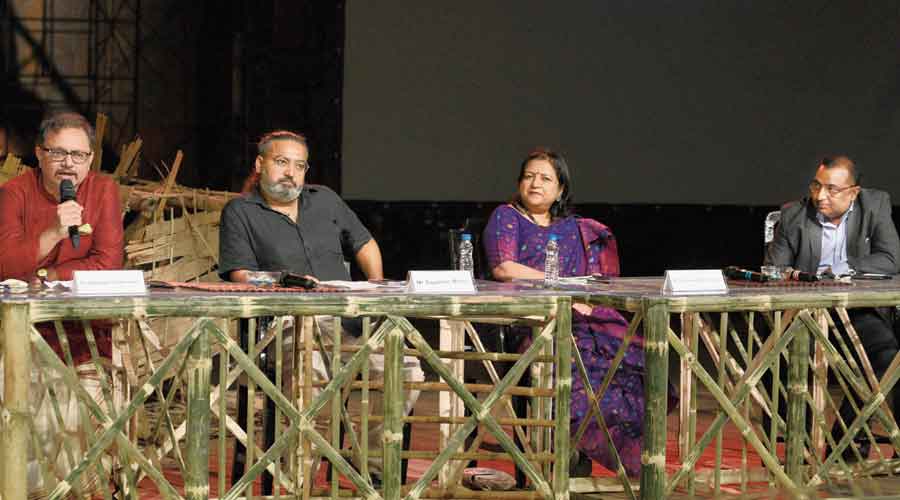Quality roads and waterways, smooth traffic and skilled guides are some of the prerequisites for drawing more international tourists during Durga Puja, Firhad Hakim, chairperson of the board of administrators of Calcutta Municipal Corporation and state’s transport minister, said on Saturday.
“We need to overcome a few challenges...,” said Hakim. He was the inaugural speaker at Durga Pujo Go Global, an interactive session to emphasise the global reach of Durga Puja festival, organised by Tala Prattoy.
Hakim pitched for curated tour packages for tourists.
“On Sashthi, they would be taken to traditional family pujas, on Saptami, they would visit the pujas in north Calcutta and on Ashtami, those in south Calcutta and Behala. On Navami, the group would be taken on a boat ride along the Hooghly to Belur Math. On Dashami, they would take part in sindur khela and dhunuchi naach and on Ekadashi, they would see the immersion carnival,” said Hakim.
Hakim cited a study done by the British Council and the government that pegged the economic size of Durga Puja at “Rs 32,377 crore”.
In an audio-visual message, art historian and author Tapati Guha-Thakurta summed up the premise of the programme.
“I have been closely following the corporate and artistic profile of Calcutta’s Durga Puja for the past 20 years. It is the biggest open-air public art event. Durga Puja has given Calcutta its main cultural and artistic identity. This aspect calls out for international cultural branding. It needs promotion at the national and international levels,” said Tapati Guha-Thakurta, the author of In the Name of the Goddess: The Durga Pujas of Contemporary Kolkata.
Cardiac surgeon and debater Kunal Sarkar moderated the session.
Debanjan Chakrabarti, the director of British Council east and Northeast India, pointed out that “12.6 per cent of Bengal’s GDP comes from tourism, whereas four per cent of India’s GDP comes from tourism”.
He talked about the recommendations in the British Council report on Durga Puja.
“We need to work on the accessibility of Durga Puja. If I am physically handicapped, can I access the pujas. The answer is no. Another important aspect is the role of women. It is so ironic that 99 per cent of the big pujas in Calcutta are run by men. This needs to change,” he said.
Sayantan Mitra, an architect, said it was not right to club Durga Puja with “high art, seen in galleries”.
“Durga Puja gives space to millions of people — to vent their opinion on the pandal — who would not enter an art gallery,” he said.
Ananya Bhattacharya, the director of Bangla Natok Dot Com, said the evolution of Durga Puja has connected rural craftsmen with Puja organisers. “The organisers are now collaborating with these artists,” she said.
Dilip Mishra, general manager, Lalit Great Eastern, said the “efforts to promote Durga Puja needed to be synchronised”.
